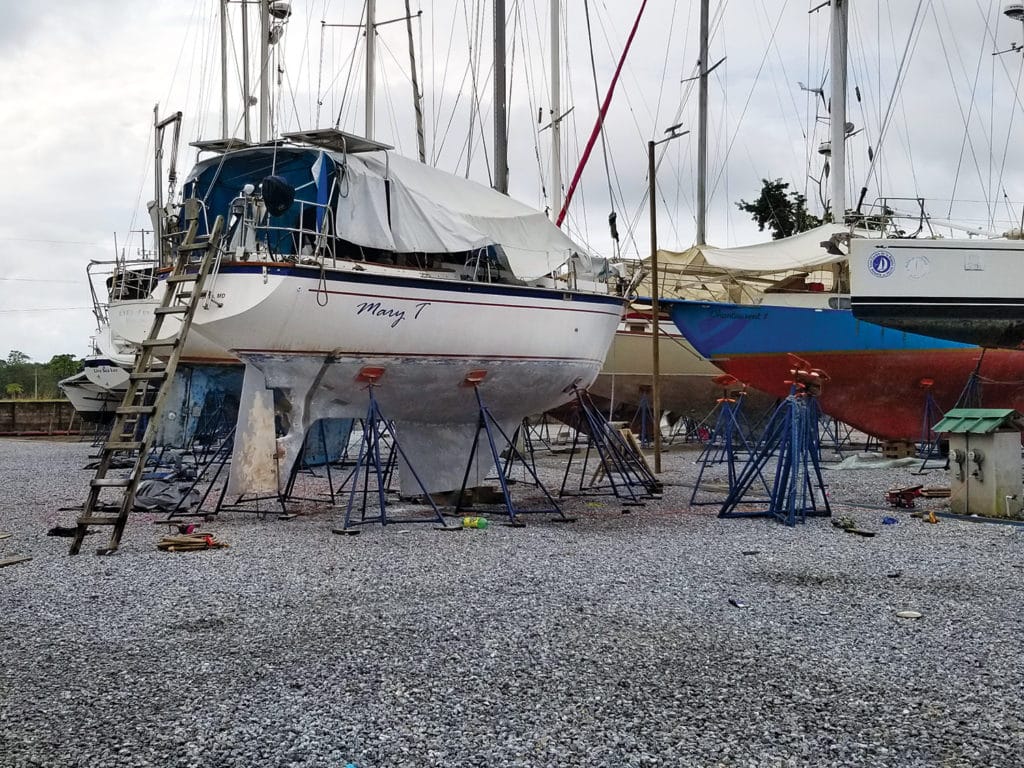
When my husband, Ken, and I sailed up Guatemala’s Rio Dulce, we never dreamed that our Morgan 38, Mary T, would reside there so long in our absence. Twenty miles inland, at the head of the river, the town of Fronteras (also known as Rio Dulce) is one of the finest hurricane holes in the Caribbean. It’s beautiful, inexpensive, the people are nice, and you can get almost every kind of boat work completed there. It’s one of those “stuck places,” where many cruisers end their sailing days. That, however, was not our plan.
Our plan was to leave the boat for the hurricane season, go back to the States for a visit, and return in October. What do they say about boats and schedules? That they’re mutually exclusive? October rolled around, and family needs trumped sailing.
We kept in touch with the marina in Rio Dulce via email and were assured that all was well with Mary T. The employees were airing her out on a regular basis, keeping her hull and decks clean, and they varnished the brightwork and cabin sole as requested.
The following summer—now a year after we had left the boat in Guatemala—we were able to return. We thought that if weather permitted and the boat was in good shape, we’d sail her back to Florida. The boat was in decent shape, and the varnish work was nicely done. And we encountered only fairly minor problems: All the lines were filthy and stiff, the chart plotter was fried, and everything that was made of rubber, including parts of the dinghy, were disintegrating. Zippers, tools, and most things made of metal were rusty or corroded.
A medical setback meant we had only five weeks to get the boat ready, provision, do a little shakedown sail, and hope for a good weather window to Florida—a tight schedule, to be sure. The daily torrential thunderstorms were not particularly encouraging.
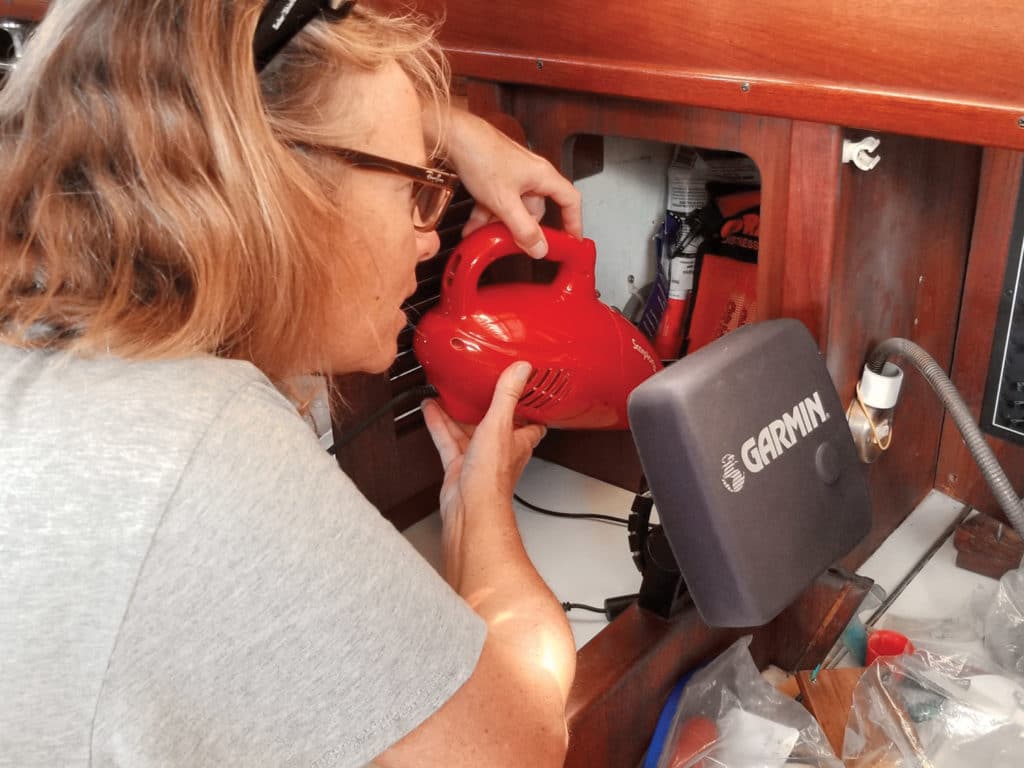
Given all of these factors, we decided it was too tight and would be more prudent to leave the boat again and return to Guatemala at a later date.
Not knowing exactly when our next opportunity to return would come, we should have been more thoughtful about our next moves. We did a few things right. We purchased a giant piece of an old vinyl billboard sign, cut it to size, and punched grommets in it to create a tarp to shelter the boat from the blistering sun. It’s a popular method in Rio Dulce and quite a bit cheaper than hiring a professional to fabricate a canvas cover. We also hoisted up sacrificial lines to protect our halyards from the elements, and took the batteries out of small electronic devices and flashlights.
Everything else we did, however, was wrong. Here are some of our lessons learned:
Mistake No. 1: Keeping all seacocks open
We asked the marina owner if we should close the seacocks. We thought if his people were cleaning the boat and running water, they might like the seacocks open. He said no problem, we could leave them open. Huge mistake. A year and a half after we’d left the boat, we received an email that on Christmas Day, Mary T had taken on nearly a foot of water above the floorboards because a plastic fitting in the head had broken.
Water came rushing in through the open seacock, and the bilge pump and high-water alarm quit working because the batteries had died. Fortunately, somebody noticed, and the marina employees pumped out the water before it could get any worse.
If you do plan to close the seacocks before leaving, consider keeping the one for the engine open in case the boat needs to be moved in an emergency, or ensure that the caretaker knows where the valve is located.
Mistake No. 2: Not monitoring the batteries
Since we weren’t leaving anything power-hungry on, Ken and I had thought that the solar panels would be sufficient to keep the batteries charged, so we didn’t connect to shore power. Had we been connected, the bilge pump would’ve continued pumping, and the flood would’ve been averted (although, admittedly, this wouldn’t have solved the reason for the flood in the first place).
Mistake No. 3: Not being specific with the marina staff
After the flood, we requested Mary T be towed to another marina that had a travel lift and be put on the hard until our return. At least then we wouldn’t need to worry about sinking. This all went well, and photos revealed that the boat was blocked as we requested. It hadn’t occurred to us to tell the new marina to stow the fenders and dock lines, which were thrown willy-nilly on the deck or remained hanging off the sides. Most of them were ruined, and the rubber from some of the fenders melted onto the deck and hull.
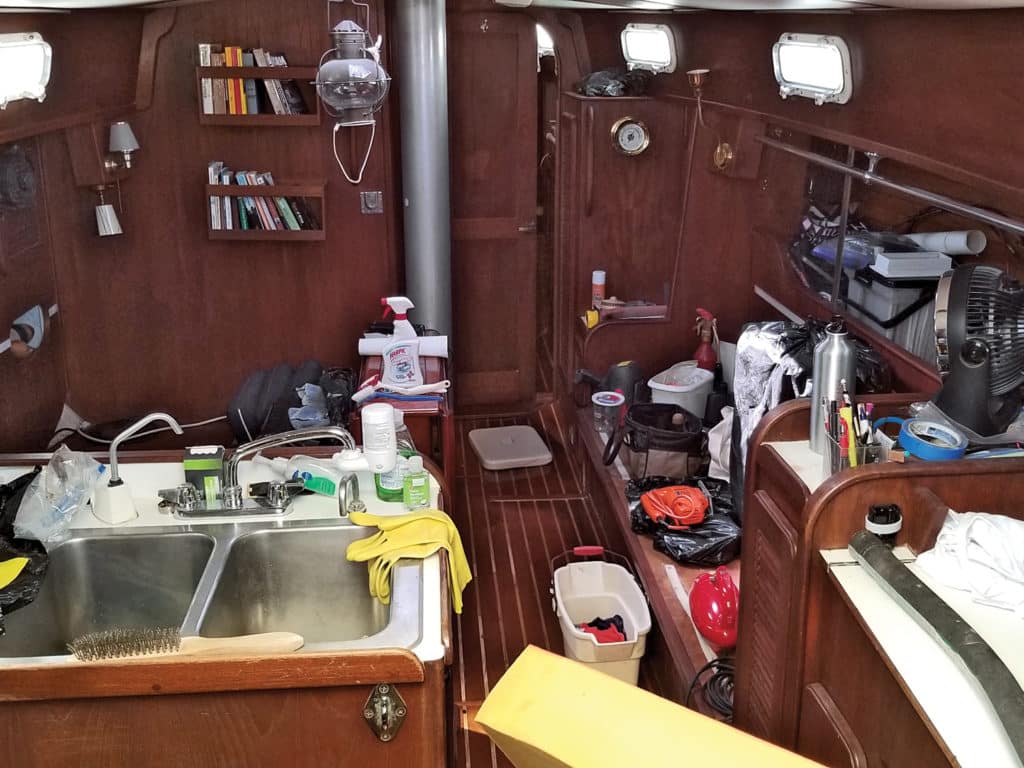
Mistake No. 4: Leaving food aboard
Leaving food aboard was another mistake we made. Canned goods, rice, pasta, spices and other items I considered to have a long shelf life were left in plastic containers or zipper bags. I didn’t really think it would be a problem—or if it was, I assumed the marina employees would remove it (see Mistake No. 3). Those were both incorrect assumptions.
Upon our return, two-and-a-half years later, we discovered a thriving community of cockroaches aboard. Their droppings and eggs were everywhere. Given more time, Ken said, they probably would’ve sailed the boat away. The eradication of the cucarachas required professional intervention. I watched the exterminator closely as he placed little piles of boric acid mixed with sugar in strategic places throughout the boat.
He explained that roaches like the dark and travel along the edges of spaces, so placing the deadly but tasty bait in the corners of cupboards, near hinges and along the ledges of storage spaces was the hot ticket. It worked like a charm. I continue to use this method when we see the occasional baby roach. It’s a nontoxic intervention, so you don’t need to vacate the boat or worry about touching it.
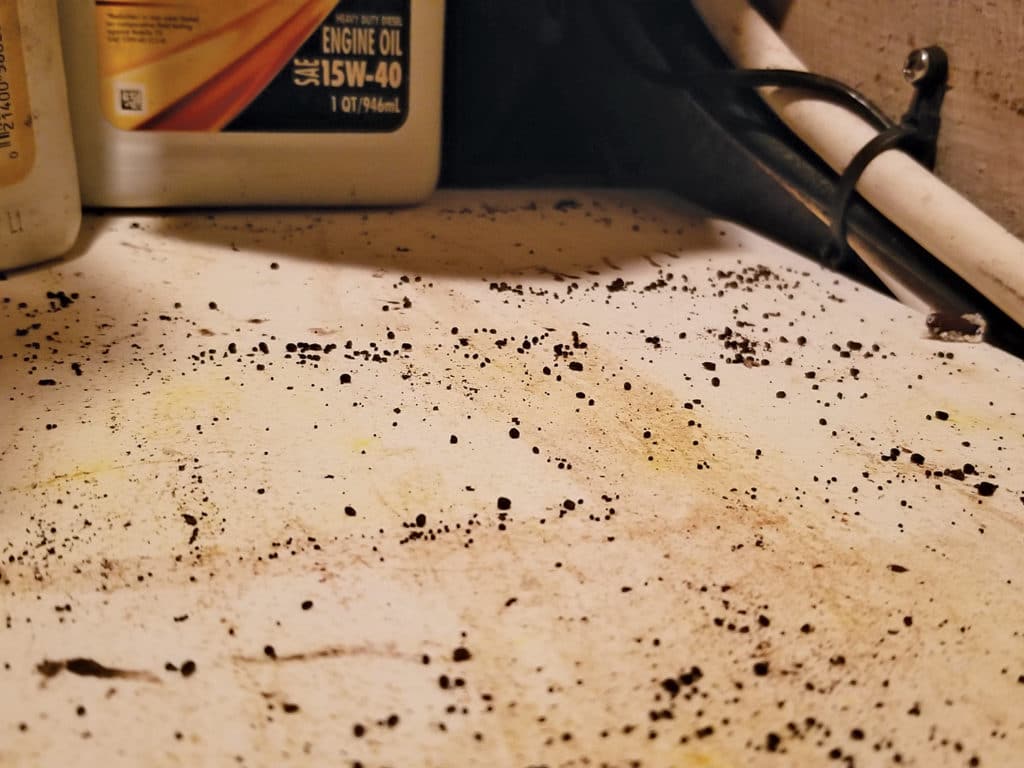
Once back in Guatemala, I cleaned every square inch of Mary T like a woman possessed, determined to eliminate every last bit of roach evidence. On a positive note, we’ve done a complete inventory, and the boat has never been so clean. You can now eat off the floor of our rope locker, and we’ve learned from our mistakes.
Thoughts for next time
If we ever leave our boat again for an extended period, we will be sure to close the seacocks and remove all food. Most important, we would go over the boat with a caretaker and create a detailed list of expectations with a schedule for cleaning, monitoring shore power and battery health, inspecting the bilge and bilge pump, and closely examining for insect infestations.
We’d request the engine be started twice a month. Our alternator belt had deteriorated onto the pulleys, and the engine’s raw-water impeller was deformed because no one ran the engine. If we left Mary T on the hard, we would flake out the anchor chain. The last 70 feet of our chain congealed into a rusty ball, and the bottom of the chain locker was loaded with rust flakes.
I would inquire monthly via email as to the overall health of the vessel. If any unforeseen events arose, requiring specific action, I would give as much detailed instructions as possible. I would not assume anything. That was our biggest mistake. It was foolish to think the marina would intuit what we wanted and do whatever was required.
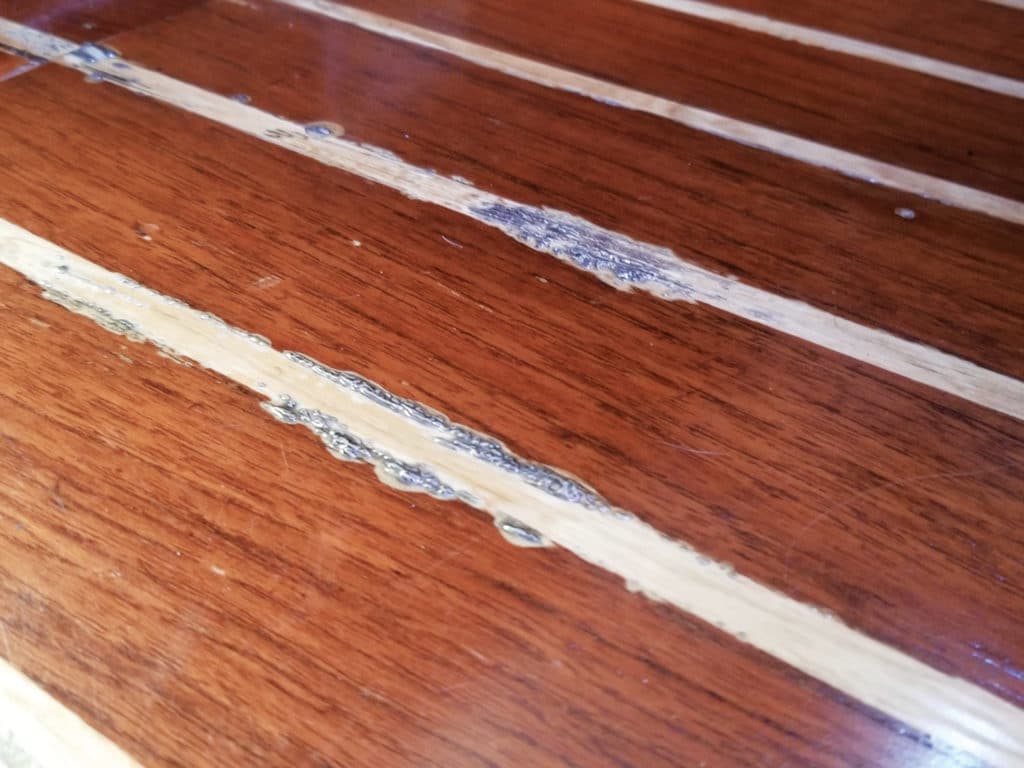
When we first came back and the boat was on the hard—filthy and in shambles—I’d find myself standing in the middle of the saloon looking at the mess, feeling overwhelmed. The next moment, I’d shove my head in a galley cupboard or storage locker and vacuum up cucaracha poop while cursing to the heavens. After working myself into a snit, I’d take a deep breath, step back and remind myself that I am one of the luckiest people in the world; I am in a beautiful, exotic land enjoying the privilege of owning a boat.
Renting an apartment near the marina during the initial weeks back in Guatemala made our return much easier. Being able to take breaks away from the chaos and the toxic dust of the boatyard made the whole process more tolerable. Even after the boat was splashed, we stayed in the apartment until the messy jobs were finished.
Now that all the major work has been completed, much of it by skilled locals, we’re comfortably living aboard again. But without a cleaning project, I hardly know what to do with myself. Oh yeah, now I remember: Let’s go sailing! Where to next?
Amy Flannery and her husband, Ken Kurlychek, are living aboard their Morgan 38, Mary T, in the Western Caribbean.








